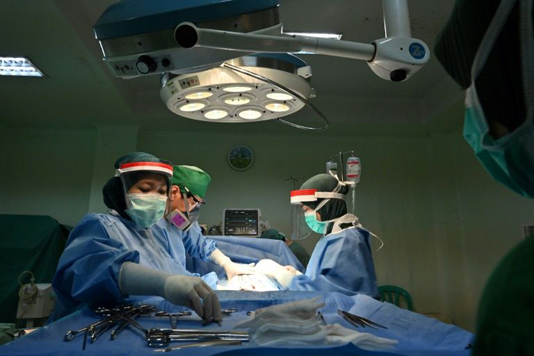
PARIS, Oct 9 (NNN-AGENCIES) — Almost two million babies are stillborn every year — one every 16 seconds — the United Nations said, warning that the Covid-19 pandemic could add another 200,000 deaths to the “devastating” toll.
The vast majority of stillbirths, 84 percent, occur in low- and middle-income countries, where basic neo-natal care could save hundreds of thousands of lives each year, according to a joint report by UNICEF, the World Health Organization and the World Bank Group.
Most stillbirths occur due to poor quality healthcare lacking investment in equipment and training of midwives.
And unlike notable reductions in recent decades in the global rate of maternal and infant deaths, stillbirths remain stubbornly frequent, particularly throughout sub-Saharan Africa and southeast Asia.
“Losing a child at birth or during pregnancy is a devastating tragedy for a family, one that is often endured quietly, yet all too frequently, around the world,” said UNICEF executive director Henrietta Fore.
“Beyond the loss of life, the psychological and financial costs for women, families and societies are severe and long lasting. For many of these mothers, it simply didn’t have to be this way.”
The report warned that the pandemic could result in nearly 200,000 additional stillbirths, assuming that 50 percent of health services are impacted in low- and middle-income countries by the Covid-19 response.
Mark Hereward, UNICEF’s associate director for data and analytics, said that infants in many countries would suffer from Covid-19 even if their mothers never contracted the disease.
“Firstly, due to the massive increase in poverty because of the global recessions,” he said.
“The other way is through an interruption to health services, either because health workers are reassigned to work on Covid or because people are afraid to go to clinic.”
Hereward said that without urgent action the world will have suffered 20 million more stillbirths by 2030.
Globally, over 40 percent of stillbirths occur during labour, the UN said. These are among the most avoidable deaths given that many labour stillbirths could be prevented with access to trained midwives and emergency obstetric care.
As well as the wide disparity in stillbirth rates between rich and poorer nations, the report also found significant variations in the rates within individual countries, often linked to socioeconomic status.
In Nepal, for example, women of minority castes have stillbirth rates 40-60 percent higher than those from upper-class castes.
And in Canada, Inuit communities have a stillbirth rate nearly three times higher than the general population.
Anshu Banerjee, director for the Department of Maternal, Newborn, Child and Adolescent Health and Ageing at the WHO said the world needed “break out of this cocoon of taboos and stigma” surrounding stillbirth. — NNN-AGENCIES






